| |
|
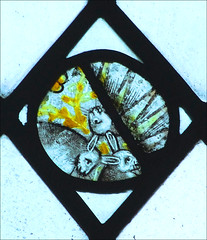 |
|
My wife's mother Joan died.
Only a few months before, we had wandered
around the churchyard at Long Melford
visiting the graves of Joan's parents and
brothers, but she fell ill suddenly in
October, and at the start of November she
died peacefully in her sleep. It was All
Saints Day. It
was more than half a century since she
had been married in Long Melford church,
and more than forty since her daughter
Jacqueline was baptised there. This was
the family church, and that made it
special in a particular way, but Holy
Trinity is a special place in lots of
ways, of course. Easily the grandest
church in Suffolk, more feminine and
beautiful than its near rival Lavenham,
it was the only church in Suffolk to
receive five stars in Simon Jenkins'
sometimes controversial England's
Thousand Best Churches. Ignoring the
most un-Suffolk-like 20th Century tower,
the vast nave with its aisles and
clerestories is the crowning moment of
East Anglian Perpendicular, with which
only Salle in Norfolk can compete.
In 1960, when Joan had
married here, Long Melford was still an
industrial village with an ironworks and
other factories, but all that is gone
now. It is hard to see beyond a pleasant
picture postcard village, with its
antique shops along the long High Street
which stretches southwards from the
village green all the way to Sudbury. The
graves that sprawl eastwards of the
church are a reminder that ordinary lives
are led even in a place like this.
|
The
setting of Holy Trinity is superlative. At the
highest point and square onto the vast village
green, its southern elevation is punctuated by
the 16th Century Trinity Hospital almshouses.
Across the green is the prospect of Melford
Hall's pepperpot turrets and chimneys behind a
long Tudor wall. Another great house, Kentwell
Hall, is to the north. Kentwell was home to the
Clopton family, whose name you meet again and
again inside the church. Norman Scarfe described
it as in a way, a vast memorial chapel
to the family.
Holy
Trinity is the longest church in Suffolk, longer
even than Mildenhall, but this is because of a
feature unique in the county, a large lady chapel
separate from the rest of the church beyond the
east end of the chancel. The chapel itself is
bigger than many East Anglian churches, although
it appears externally rather domestic with its
triple gable at the east end. There is a good
collection of medieval glass in the otherwise
clear windows, as well as a couple of modern
pieces, and a very mdern altarpiece at the
central altar. Jacqueline's mother remembered
attending Sunday School in this chapel in the
1940s.
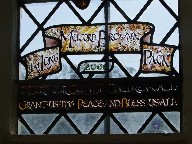 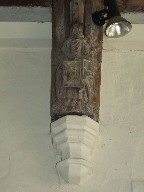 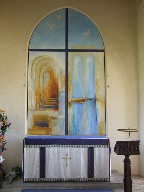
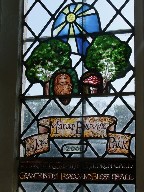 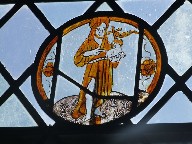
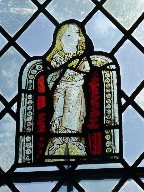 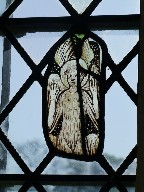 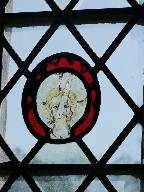
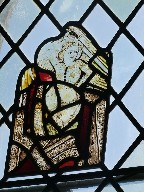 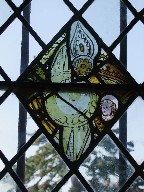
The
intimacy of the Lady Chapel is in great contrast
to the vast walls of glass which stretch away
westwards, the huge perpendicular windows of the
nave aisles and clerestories, which appear to
make the castellated nave roof float in air. An
inscription in the clerestory records the date at
which the building was completed as 1496. Forty
years later, it would all have been much more
serious. Sixty years later, it would not have
been built at all. A brick tower was added in the
early 18th Century, and the present tower, by GF
Bodley, was encased around it in 1903. As Sam
Mortlock observes, this tower might seem out of
place in Suffolk, but it nevertheless matches
the scale and character of the building. It
is hard to imagine the church without it.
I
came here back in May with my friend David
Striker, who, despite living thousands of miles
away in Colorado, has nearly completed his
ambition to visit every medieval church in
Norfolk and Suffolk. This was his first visit to
Long Melford, mine only the latest of many. We
stepped down into the vast, serious space.. There
was a fairly considerable 19th Century
restoration here, as witnessed by the vast sprawl
of Minton tiles on the floor, although perhaps
the sanctuary furnishings are the building's
great weakness. Perhaps it is the knowledge of
this that fails to turn my head eastwards, but
instead draws me across to the north aisle for
the best collection of medieval glass in Suffolk.
During the 19th century restoration it was
collected into the east window and north and
south aisles, but in the 1960s it was all
recollected here. Even on a sunny day it is a
perfect setting for exploring it.
The
most striking figures are probably those of the
medieval donors, who originally would have been
set prayerfully at the base of windows of
devotional subjects. Famously, the portrait of
Elizabeth, Duchess of Norfolk is said to have
provided the inspiration for John Tenniel's
Duchess in his illustrations to Lewis Carroll's Alice
in Wonderland, although I'm not sure there
is any evidence for this. Indeed, several of the
ladies here might have provided similar
inspiration.
The
best glass is the pieta, Mary holding the body of
Christ the Man of Sorrows. Beneath it is perhaps
the best-known, the Holy Trinity represented in a
roundel as three hares with their ears
interlocking. An angel holding a Holy Trinity
shield in an upper light recalls the same thing
at Salle. Other glass includes a fine
resurrection scene and a sequence of 15th Century
Saints. There is also a small amount of
continental glass collected in later centuries,
including a most curious oval lozenge of St
Francis receiving the stigmata.
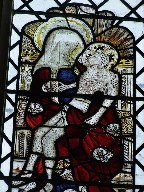 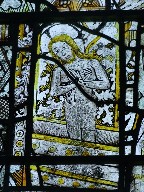 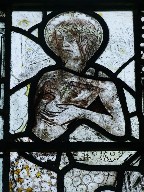 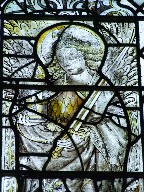
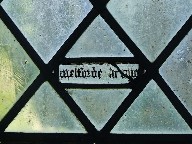 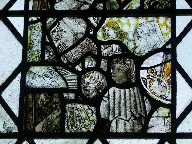 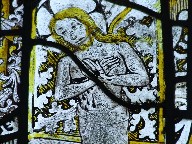 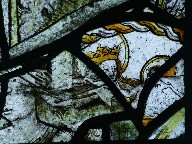
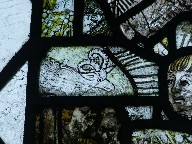 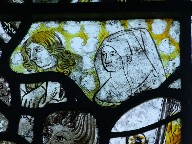 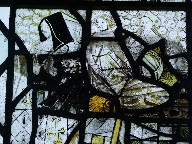 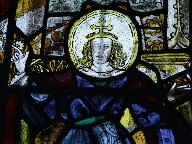
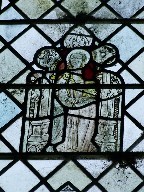 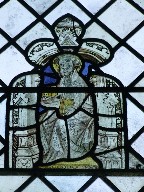 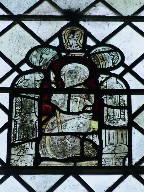 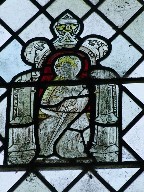 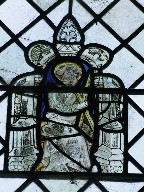 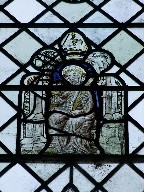
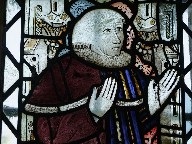 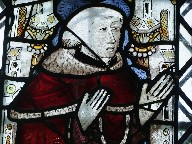 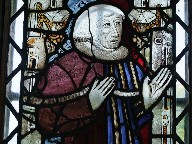 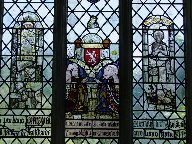
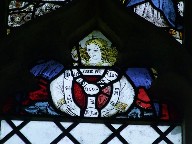
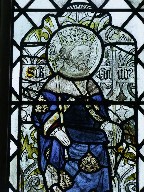 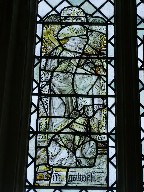 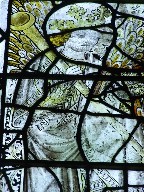 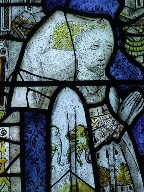 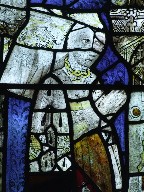 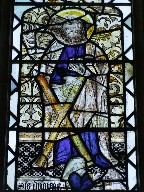
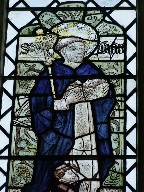 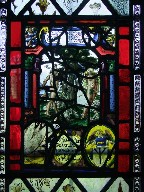 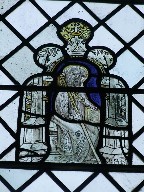 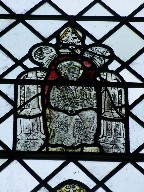 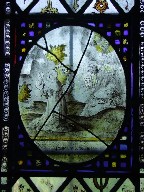 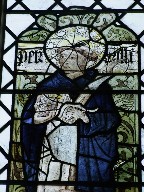
Walking
eastwards down the north aisle until the glass
runs out, you are rewarded by a remarkable
survival, a 14th century alabaster panel of the
Adoration of the Magi. It probably formed part of
the altar piece here, and was rediscovered hidden
under the floorboards in the 18th century.
Fragments of similar reliefs survive elsewhere in
East Anglia, but none in such perfect condition.
Beyond it, you step through into the north
chancel chapel where there are a number of
Clopton brasses, impressive but not in terribly
good condition, and then beyond that into the
secretive Clopton chantry. This beautiful little
chapel probably dates from the completion of the
church in the last decade of the 15th century.
Here, chantry priests would have celebrated
Masses for the dead of the Clopton family. The
chapel is intricately decorated with devotional
symbols and vinework, as well as poems attributed
to John Lidgate. The beautiful Tudor tracery of
the window is filled with elegant clear glass
except for another great survival, a lily
crucifix. This representation occurs just once
more in Suffolk, on the font at Great Glemham.
The panel is probably a later addition here from
elsewhere in the church, but it is still haunting
to think of the Chantry priests kneeling towards
the window as they asked for intercessions for
the souls of the Clopton dead. It was intended
that the prayers of the priests would sustain the
Cloptons in perpetuity, but in fact it would last
barely half a century before the Reformation
outlawed such practices.
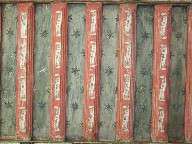 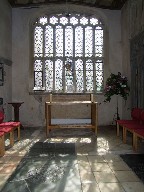
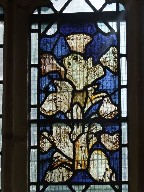
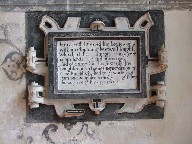
You
step back into the chancel to be confronted by
the imposing stone reredos. Its towering
heaviness is out of sympathy with the lightness
and simplicity of the Perpendicular windows, and
it predates Bodley's restoration. The screen
which separates the chancel from the south chapel
is medieval, albeit restored, and I was struck by
a fierce little dragon, although photographing it
into the strong south window sunshine beyond
proved impossible. The brasses in the south
chapel are good, and in better condition. They
are to members of the Martyn family.
| The south chapel is also the
last resting place of Long Melford's
other great family, the Cordells. Sir
William Cordell's tomb dominates the
space. He died in 1581, and donated the
Trinity Hospital outside. His name
survives elsewhere in Long Melford: my
wife's mother grew up on Cordell Road,
part of a council estate cunningly hidden
from the High Street by its buildings on
the east side. At the west end of the
aisle is the towering 1930s cover to the
medieval font where her daughter would be
baptised. Before she died,
Joan asked that she should not be buried
among the family graves at Long Melford,
because they were too far from home, and
she thought it would make it difficult
for her husband to visit her there. If I
tell you that Joan and Bob lived off the
Melford Road in Sudbury, barely three
miles from the church, and in any case
Bob is a perfectly capable car driver, it
might give you an insight into how
parochial working class Suffolk still was
in the early years of the 21st century.
Instead, she chose to be buried in
Sudbury, within walking distance of the
family home. But anyone who knew her well
would tell you that she was really a
Melford girl at heart.
|
|
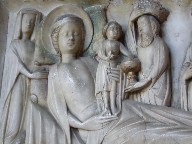 |
|
|
|

